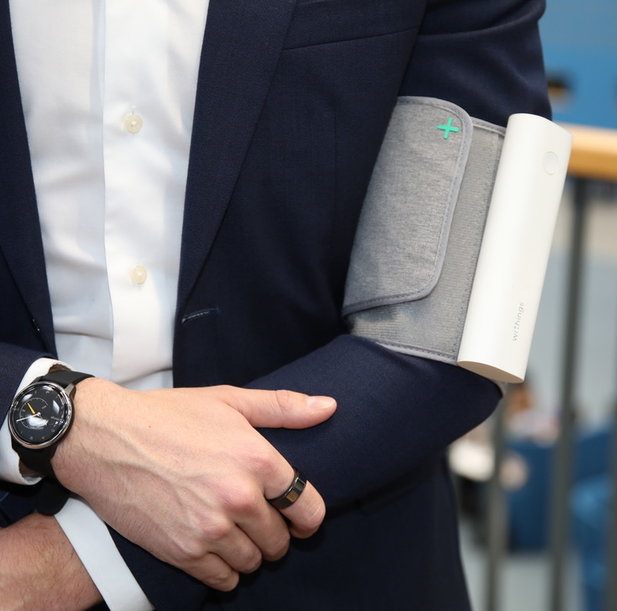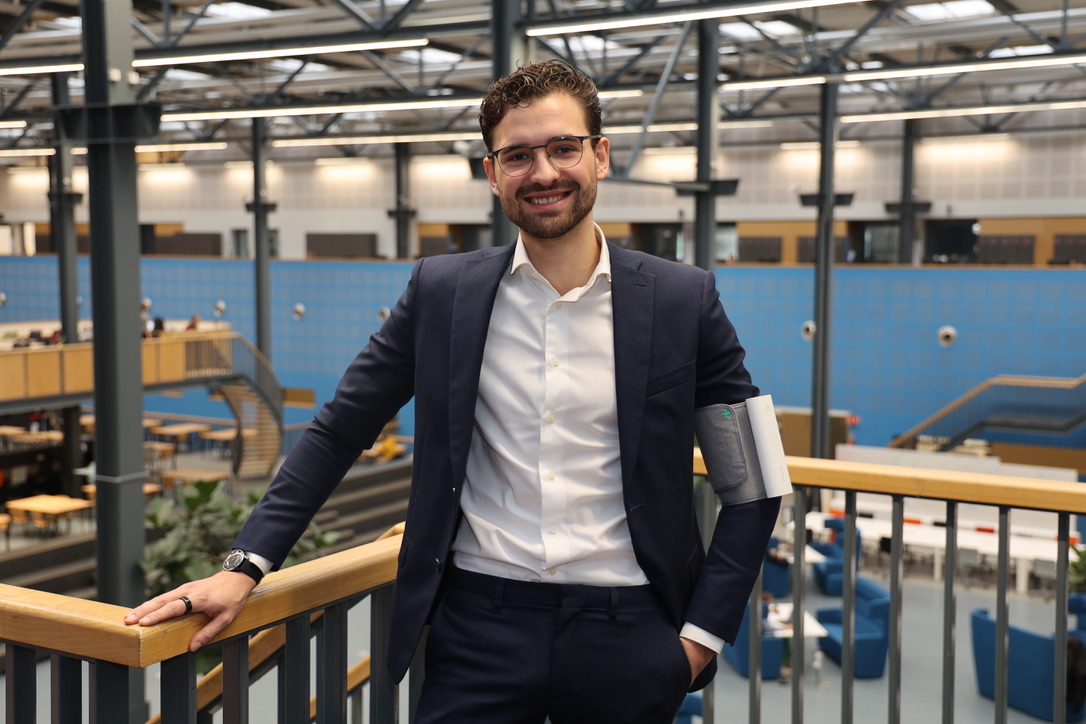Julian Houwen
What exactly do you do at the cutting edge of technology and healthcare?
I have always been fascinated by the commitment of healthcare professionals to the people around us. But technology appealed to me even more, and I now use remote patient management to improve care for both the patient and the healthcare professional. Smart wearables and the collection of data are a means to an end. It’s really all about providing support based on the data acquired, in order to make a long-term impact on the patient’s well-being. It often works preventively, with personalised feedback, coaching and offering the right interventions.
My health ambassador Maaike Kleinsmann is setting up an infrastructure that will allow remote patient management to be introduced within healthcare on a large scale. In my PhD, I mainly look from the system level at the technical, organisational, ethical and political barriers that hinder this upscaling. And how to bridge them.
I’m also looking into a specific intervention: promoting a healthy/healthier lifestyle for those with heart disease. We not only involve the patient, but also the partners, children and other family members. For example, a partner who continues to smoke influences whether the patient takes up smoking again. When setting up this remote patient management care pathway, it’s important to consider what would be needed to be able to apply it in another hospital.

How do you experience the medical world?
The technology for remote patient management is already largely available. To be able to use it as effectively as possible, the key question is: what do we want to achieve with this? As a designer, I’ve learned to listen carefully to the experts, i.e. the healthcare professionals with their medical knowledge and the patients who are the experts of their own lives. I didn’t speak their language right away, so there’s definitely a learning curve in designing for the medical context.
Despite the fact that the current healthcare system is overburdened and healthcare professionals are extremely busy, the people I work with gladly make time for me. We have now reached the point where we can co-create an intervention that suits their workflow and the patient’s life. In doing so, they will also have to be open to taking other perspectives into account. And realise that something may seem very easy, while it is actually quite complex in terms of technology and design.
Do you have a top tip for engineers who already work or want to work in the medical domain?
You can’t do it alone. If you want to do something in healthcare, you have to work with the stakeholders within the system: the healthcare professionals, the health insurers, the hospitals themselves, the managers and the patients.
And be aware that innovations in healthcare often get stuck in the pilot phase because you encounter different things in the real world than in the lab. Therefore, in the initial phase, it’s important to identify the complexities that can play tricks on you later on. And from there, reason back to where you are now.
